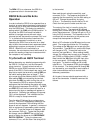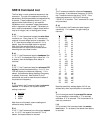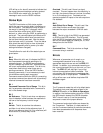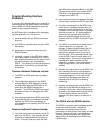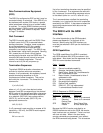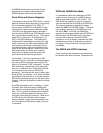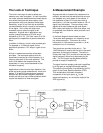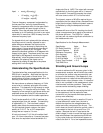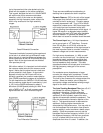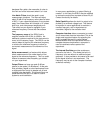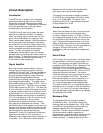23
the RS232 interface has no provision for bus
commands and remote commands over the
RS232 interface would never be enabled.
Serial Polls and Service Requests
The status byte sent by the SR510 when it is serial
polled is the same status byte which is read using
the Y command (except for bit 6, SRQ). Of
course, when the SR510 is serial polled, it does
not encode the status byte as a decimal number.
The SR510 can be programmed to generate a
service request (SRQ) to the GPIB controller every
time a given status condition occurs. This is done
using the V{n} command. The mask byte, n (0-
255), is the SRQ mask byte. The mask byte is
always logically anded with the status byte. If the
result is non-zero, the SR510 generates an SRQ
and leaves the status byte unchanged until the
controller performs a serial poll to determine the
cause of the service request. When the unit has
been serial polled, the status byte is reset to
reflect all of the status conditions which have
occurred since the SRQ was generated.
For example, if we want to generate an SRQ
whenever there is an overload or unlock condition,
we need an SRQ mask byte equal to 00011000
binary, or 24 decimal ("V24" command). The byte
00011000 binary corresponds to the status byte
with the 'no reference' and 'unlock' status bits set.
If an overload occurs, then an SRQ will be
generated. The serial poll will return a status byte
showing SRQ and overload. If an unlock condition
occurs before the serial poll is concluded, another
SRQ will be generated as soon as the serial poll is
finished. A second serial poll will reflect the unlock
condition.
Any SRQ generated by the 'no reference, 'unlock',
'overload', and 'auto over-range' conditions will
also reset the corresponding bit in the SRQ mask
byte. This is to prevent a constant error condition
(such as no reference applied to the input) from
continually interrupting the controller. When such
an SRQ occurs, the controller should change
some parameter so as to solve the problem, and
then re-enable the SRQ mask bit again using the
V command.
GPIB with RS232 Echo Mode
It is sometimes useful when debugging a GPIB
system to have some way of monitoring exactly
what is going back and forth over the bus. The
SR510 has the capability to echo all characters
sent and received over the GPIB to its RS232 port.
This mode of operation is enabled by setting
switch 6 of SW1 to the DOWN position. The baud
rate, stop bits, and parity of the RS232 port are
still set by SW2. Of course, the RS232 port
operates at much lower speeds than the GPIB and
will slow down the GPIB data rate in this mode.
(Use the W0 command to allow the RS232
interface to run at full speed, otherwise, the GPIB
transactions may take so long that the controller
can hang.) During actual use, this mode should
be disabled.
The SR510 with BOTH Interfaces
If both interfaces are connected, commands may
be received from either interface. Responses are




